Canine Companions: Famous Artists and Their Beloved Dogs
There’s nothing like the bond between a passionate creator and their loyal four-legged friend. Let’s explore the heartwarming...
Jimena Aullet 10 February 2025
Tigers are frequently depicted in art – this fierce but beautiful animal has fascinated artists from across the world. Let’s leap into the eye of the tiger!
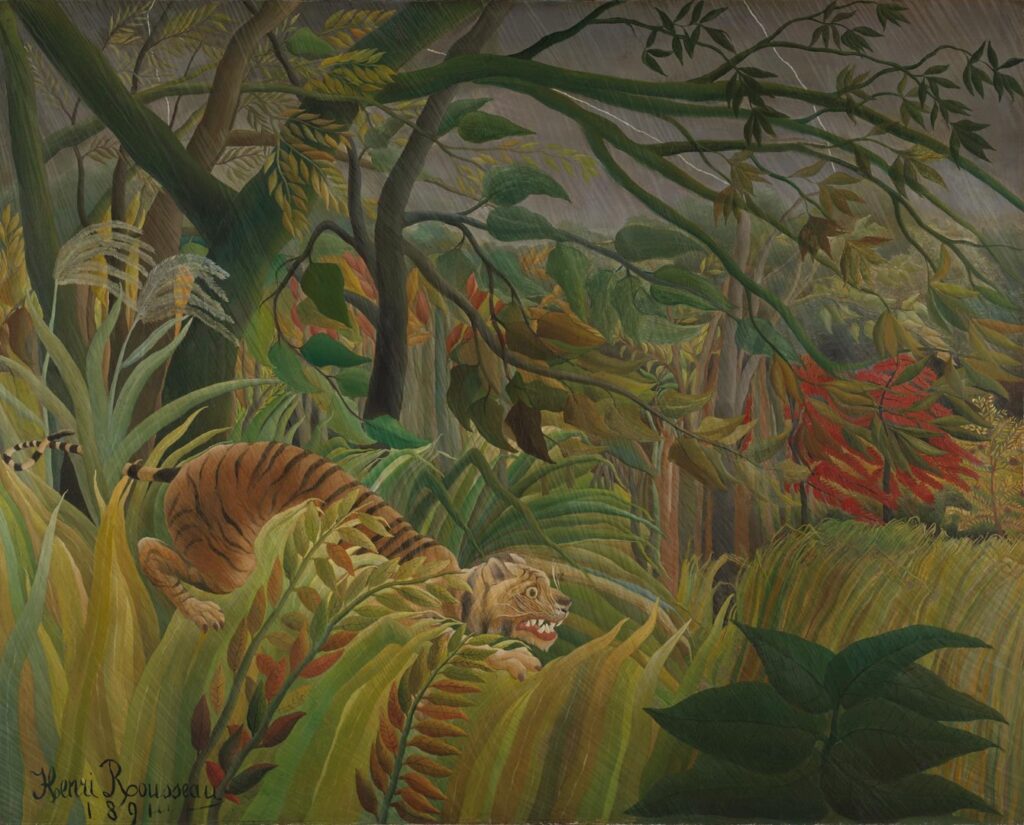
Henri Rousseau, Surprised, 1891, National Gallery, London, UK.
With their stunning black-and-orange striped coats and long, white whiskers, tigers are the largest and most iconic of the big cats. Did you know that tiger stripes are as individual and unique as our own fingerprints? Wild tigers live across Asia, although sadly their numbers have dropped dramatically because of human life expanding into their territories, hunting, and poaching. They are solitary animals, except where mothers are raising their cubs, and artists across the globe find them endlessly fascinating. Although Henri Rousseau probably never saw a real-life tiger, his painting Surprised is universally popular.

Kishi Chikudo, Detail from Tiger, Tigress and Cubs, 1892, Metropolitan Museum of Art, New York City, NY, USA.
As tigers have prowled China for thousands of years, it is no surprise that they have been frequently depicted in Chinese art from the ancient times to today. We know the ancient Chinese found tigers both terrifying and captivating. Among the earliest depictions of tigers are white jade carvings dating back at least 4,000 years. Used as both symbol and subject, their depictions range from playful kitten to monstrous man-eater.
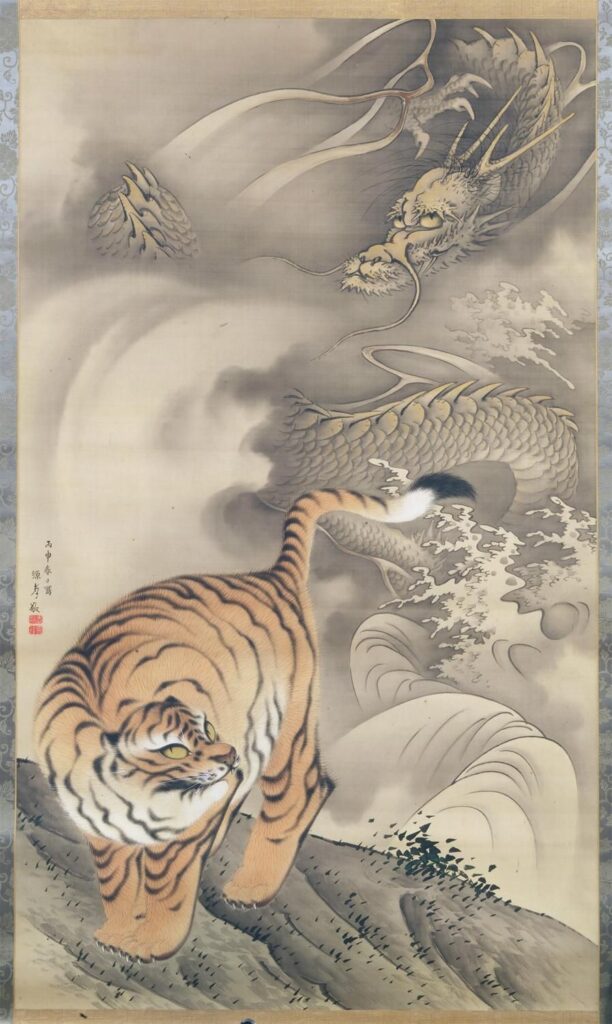
Yoshimura Kokei, Dragon and Tiger, 1836, Joan B Murviss Galleries, New York City, NY, USA.
Tigers are seen as both cruel and terrifying but also brave and powerful. China’s ancient warrior class (and its more modern military) use the image of the fierce tiger as a sign of military prowess. Tigers are also considered a protective deity for Chinese children – parents will buy clothes, shoes and hats with tiger designs for their babies and children.
Asian artists often paired tigers with dragons amidst swirling clouds. Together, the two images represent opposite principles in nature, working in harmony. Countries without native wild tigers tend to depict more playful, sometimes distinctly odd depictions. In Japanese art, the animal can look quite gentle. Whereas in India, where rural communities rightly feared this giant predator, the image is much more terrifying.
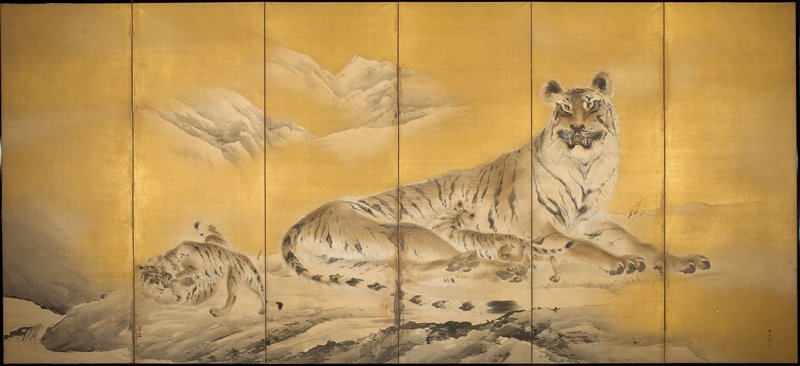
Kishi Chikudo, Tigers by Mountain Streams, 1892-1895. China Online Museum.
Japanese artist Kishi Chikudo, born in Hikone in 1826 belonged to the Kishi school of painting. The Kishi school was distinguished by its superior paintings of animals, especially the tiger. They developed a very distinctive style of brushwork for the expression of bodies and fur. Tigers are not native to Japan, and Kishi Chikudo is believed to be the first Japanese painter who sketched real tigers, seen in traveling zoos or circuses. He was shocked when he saw the animal up close and personal, and became obsessed with them as subjects. He produced a number of masterpieces, especially later in life, but the sheer intensity of his work led to serious mental health problems: some say he saw hallucinations of tigers from his own paintings.
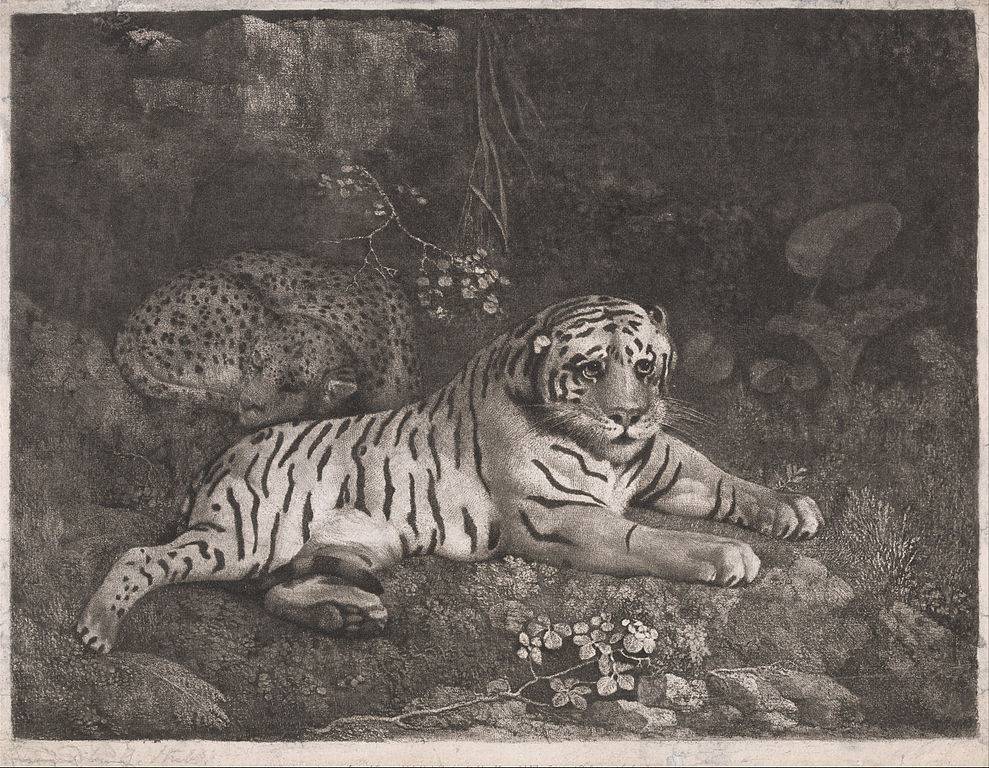
George Stubbs, A Tiger and a Sleeping Leopard, 1788, Yale Center for British Art, New Haven, CT, USA.
Some Europeans encountered tigers in the wild during their colonial rampages, but most saw them in zoos that spread across Europe from around the beginning of the 17th century. King James I of England had a tiger in his royal menagerie at the Tower of London. Artists and writers were entranced by the tigers strength and savagery. The etching by George Stubbs above shows a rather sad looking animal with a distinctly odd looking body.
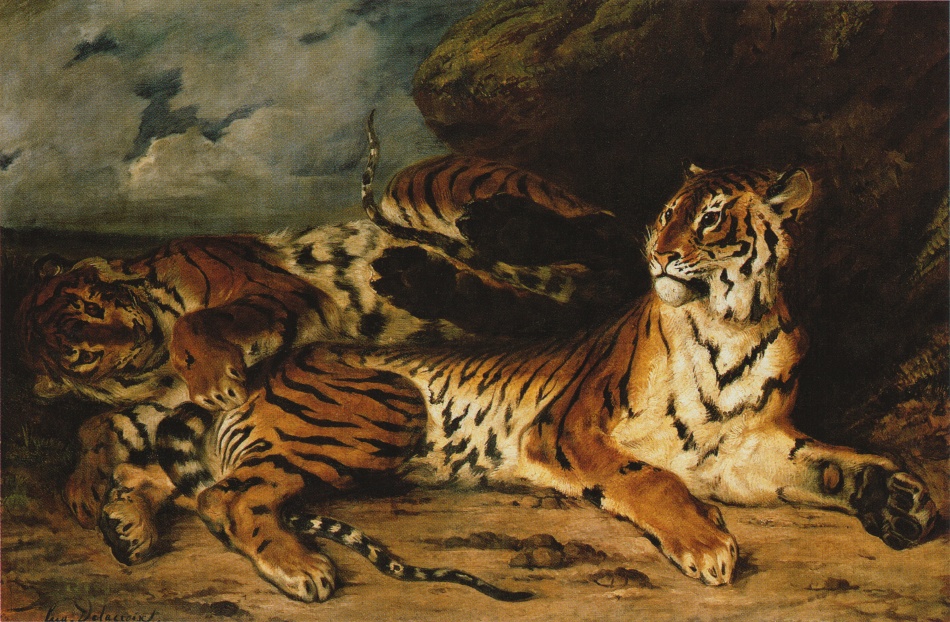
Eugène Delacroix, Young Tiger Playing with Its Mother, 1830, Louvre, Paris, France.
French artist Eugène Delacroix also had something of an obsession with tigers—he painted them many times in his early career. His models ranged from his own pet cats to the captured animals in the Jardin des Plantes zoo in Paris. His largest painting of tigers is above. They are cute and playful , but of course, this play is training for a life of stalking and hunting. Some years later in 1854, he painted The Tiger Hunt, a ferocious image of a hunt gone wrong, where the tiger is fighting back against cruel humanity.
English poet, painter, and printmaker William Blake is famous for his work The Tyger. It was published in 1794 as part of his Songs of Experience poem collection. In The Tyger, Blake combines a childlike portrait of this fascinating creature with verses that contemplate its nature. For Blake, it is both the beauty and intense ferocity of the tiger that makes it an absolute miracle of nature.
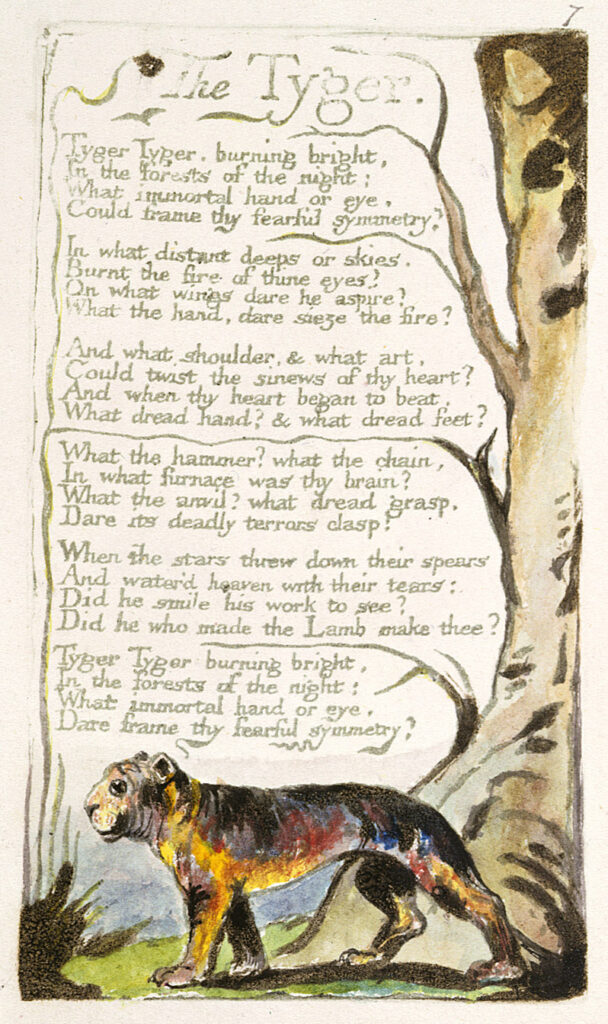
William Blake, The Tyger, 1794. Wikimedia Commons (public domain).
Tyger Tyger, burning bright,
In the forests of the night;
What immortal hand or eye,
Could frame thy fearful symmetry?Poem The Tyger, 1794.
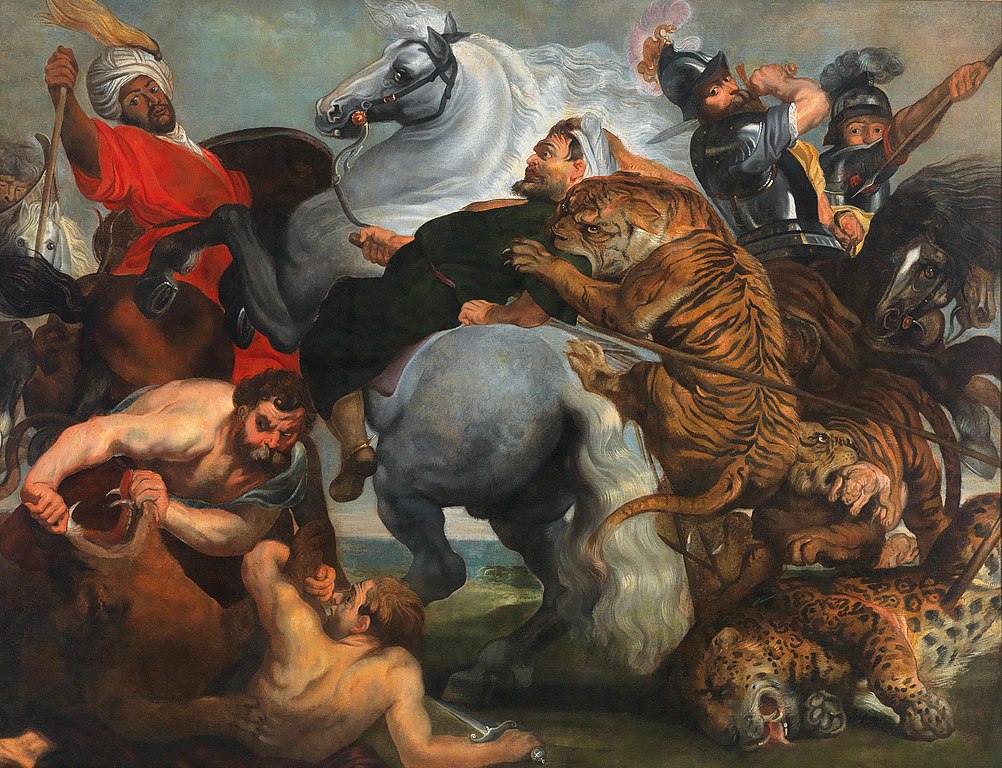
Workshop of Peter Paul Rubens, The Tiger, Lion and Leopard Hunt, 1616, Musée des Beaux-Arts de Rennes, Rennes, France.
Flemish Baroque master Peter Paul Rubens depicted a vivid hunt scene involving a tiger (shown above). It was one of four hunt scenes commissioned by Maximilian I, Prince Elector of Bavaria to decorate the grand Schleissheim Palace. It is brutal to look at, but shows the power and the fear of both animal and human.
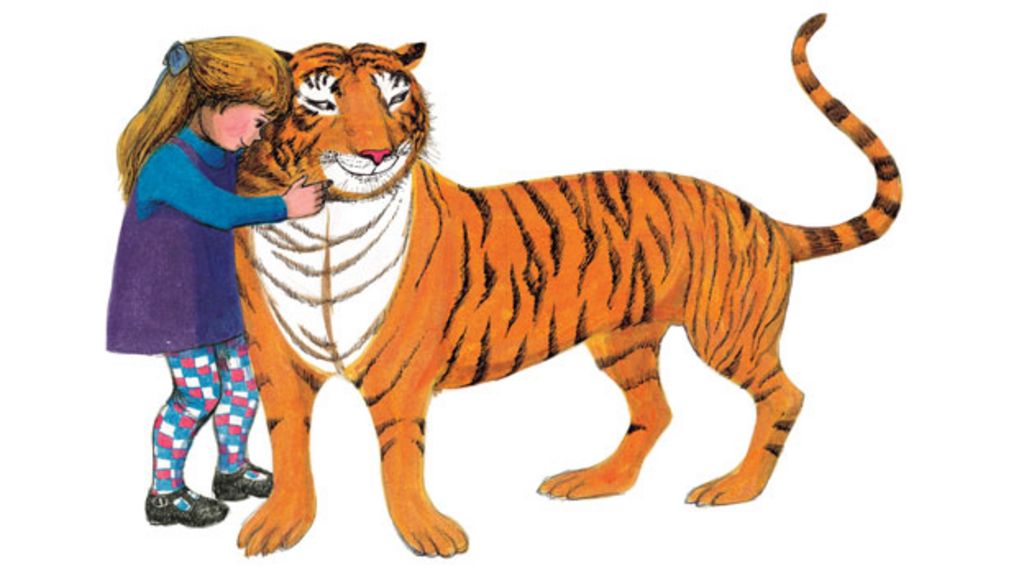
Judith Kerr, The Tiger Who Came To Tea, 1968. BBC/Wikimedia Commons.
If we think back to childhood, who remembers reading The Tiger Who Came To Tea? First published in 1968, written and illustrated by Judith Kerr, it is still regularly in print, and is a favorite of storytellers everywhere. It is thought that her early experiences in the Nazi Holocaust may have influenced the author in this tale of a tiger who inexplicably turns up and eats everything in the family home. The tiger is charming, but implacable, robbing the child of her security and routine.
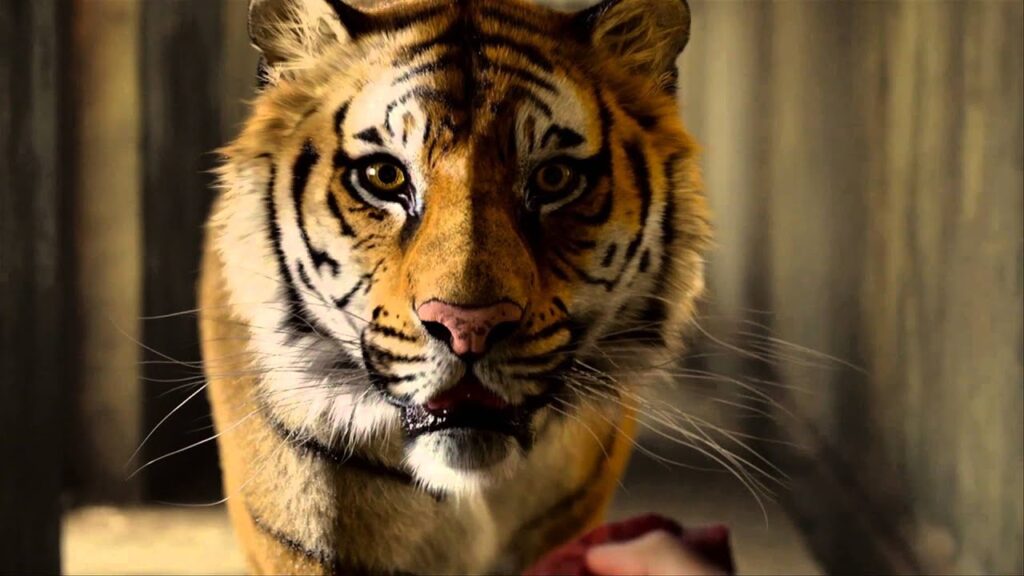
Movie still from Life of Pi, directed by Ang Lee, 2012. 20th Century Fox.
For slightly older fans of tigers, there is of course Richard Parker, the big cat who survives a shipwreck with a young Indian boy in the novel (and movie) Life of Pi. Some say the tiger represents the boys primal survival instinct, and their relationship is certainly complex and multi-layered.
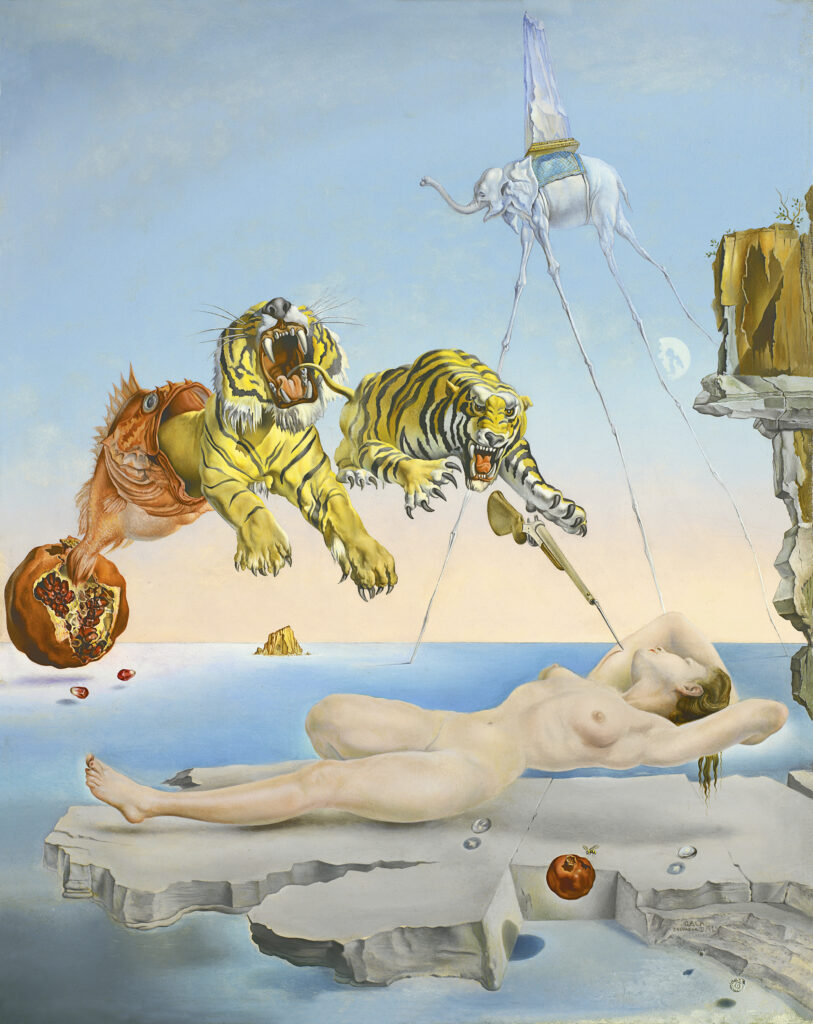
Salvador Dali, Dream Caused by the Flight of a Bee Around a Pomegranate a Second Before Waking, 1944, Thyssen-Bornemisza Museum, Madrid, Spain.
Modern artists continue to be inspired by the implacable tiger. Salvador Dali’s tigers are once seen, never forgotten. Certainly not a scene from the natural world, this dream sequence shows a fish shooting out of an exploding pomegranate, with two tigers emerging from the mouth of the fish. Nope, I can’t explain that.
So, you have seen our choice of tiger images. Do you like your tigers wild and untamed or kitty-cat-like? The art world is packed with images of these gorgeous creatures – there is a tiger out there for you, you just have to find them!
DailyArt Magazine needs your support. Every contribution, however big or small, is very valuable for our future. Thanks to it, we will be able to sustain and grow the Magazine. Thank you for your help!